Text
Is the Social Credit System a way to instil good behaviour and provide safety to citizens? At what cost?

URL Link : https://www.robonero.com/ar/articles/social-credit-systems-good-bad-or-a-nightmare
Introduction
At a time when technological advancements are occurring, governments are investigating novel approaches to the management and administration of society. The installation of a Social Credit System is one such strategy that has brought about both curiosity and worry on a worldwide scale. To score individuals based on their behavior, financial history, social relationships, and adherence to society standards, this all-encompassing scoring mechanism, which has its roots in China, was developed. This article will go into the complexities of the Social Credit System, investigating whether it serves as a tool to encourage good behavior and promote citizen safety, and critically examining the potential costs involved with its implementation. Specifically, this article will focus on the former.
A Comprehensive Understanding of the Social Credit System
The Social Credit System is a multi-faceted instrument that, in theory, aims to facilitate the development of a culture that is characterized by trust and integrity. Its goal is to contribute to the development of a society in which individuals are incentivized to behave in a responsible manner by intertwining positive acts with prizes and imposing penalties on those with lower scores.
With the intention of instilling good behavior, the purpose would be to
Encouraging Credible Behavior and Behavior
Citizen participation in trustworthy behavior is encouraged through the Social Credit System. Higher credit ratings are a reward for positive actions, such as paying bills on time, volunteering in the community, and engaging in other things that are socially responsible.
Improving the overall safety of citizens
Supporters of the Social Credit System claim that it has the potential to make society safer if it is properly implemented and operates. Individuals could be held accountable for their conduct through the use of a score system, which could potentially result in better adherence to societal norms, which would, in theory, lead to a reduction in criminal activity and an improvement in public behavior.
What Does It Cost to Have Social Credit?
URL Link : https://www.wired.co.uk/article/china-social-credit-system-explained

Security and Confidentiality.
The considerable surveillance that is required to collect the data that is essential for scoring individuals is one of the key issues that surrounds the Social Credit System. Because the system gathers information from a wide variety of sources, including social contacts and internet activity, some people believe that this violates the citizens' right to privacy.
Possibility of Abuse of Power over Others
Abuse is a possibility that should be considered when such power is concentrated in the hands of the government. Suppressing dissent and variety of thought could be accomplished through the use of the capacity to affect an individual's access to services or opportunities depending on their score. This could be exploited for political or ideological goals.
Classification of people in society
The system is in the process of evolving, and there is a possibility that it will create a society that is separated along credit score lines. A lack of equal chances for all individuals can be attributed to the fact that those with better scores may enjoy more privileges, which can lead to social stratification.
Case Study: China's Implementation of the Strategy
A closer look at the Social Credit System's implementation in China will help us gain a better understanding of the impact that it has had. Since its inception in 2014, the system has been subjected to both praise and criticism from various quarters. Critics focus on the erosion of personal freedoms and a developing culture of self-censorship, while supporters believe that it has contributed to a reduction in some forms of crime and improved public behavior. Proponents of the policy also refer to the fact that it has improved public behavior.

URL Link : https://www.wired.co.uk/article/chinese-government-social-credit-score-privacy-invasion
Caption: The Social Credit System in China is being put into effect.
A delicate balancing act: Is it possible for good intentions to prevail without compromising freedom?
There is still the question of whether or not a Social Credit System can accomplish its aim of instilling good behavior and safeguarding the safety of citizens without compromising the individual liberties of its members. The expenses involved with comprehensive surveillance, the possibility of power abuse, and social stratification are key considerations, and it is essential to find a balance between these factors.
As a conclusion
Important problems regarding the trade-offs between order and freedom are brought up by the Social Credit System, which attempts to mold the conduct of society. It is impossible to disregard the potential costs of the system, which include the invasion of privacy and the split of society, despite the fact that its aim is to make society safer and more responsible. It is necessary to engage in a discourse that is both intelligent and transparent about the implications of such systems on individual rights, societal peace, and the delicate balance that exists between freedom and security. This dialogue is taking place at a time when international governments are considering comparable measures.
0 notes
Text
Are gaming communities becoming more toxic environments for some (e.g. women, LGBT communities, ethnic minorities)?
Introduction:
In the ever-expanding universe of gaming, where pixels and polygons converge to create virtual landscapes, an unfortunate reality is emerging: the rise of toxicity within gaming communities. Once celebrated for its ability to connect individuals across the globe, the gaming world is now grappling with an escalating issue – one that disproportionately affects certain groups, including women, members of the LGBTQ+ community, and ethnic minorities. This exploration delves deeper into the multifaceted challenges posed by toxicity and the pressing need for transformation within gaming communities.
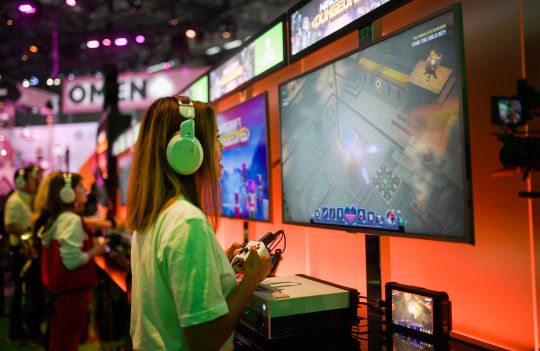
URL Link : https://www.google.com/search?q=Are+gaming+communities+becoming+more+toxic+environments+for+some+(e.g.+women,+LGBT+communities,+ethnic+minorities)%3F&client=safari&sca_esv=586595587&rls=en&tbm=isch&source=lnms&sa=X&ved=2ahUKEwjIvbPyyOuCAxVFo-kKHaLgBTsQ_AUoAnoECAQQBA&biw=1199&bih=737&dpr=1#imgrc=YhXE5Vq6bVOQGM
The Rise of Toxicity:
As the gaming community continues to burgeon, the advent of online harassment, hate speech, and discrimination within gaming spaces is reaching concerning heights. These toxic behaviors, often lurking beneath the anonymity afforded by the digital realm, have the potential to make the gaming experience not only unpleasant but, in extreme cases, outright hostile. The question at the forefront of this discussion is how these toxic elements impact the inclusivity of virtual spaces that were initially designed to be escapes from the rigors of reality.

URL Link : https://medium.com/@thomasderr/the-truth-behind-gaming-toxicity-dbfd755fa235
Challenges Faced by Women:
In the intricate tapestry of gaming, women find themselves navigating a terrain fraught with challenges. Despite a growing number of female gamers, they still encounter gender-based harassment, sexist remarks, and an egregious gender pay gap in professional gaming. The toxicity not only impedes the enjoyment of gaming for women but also erects barriers to their participation in esports and other competitive spheres. The pervasive nature of these challenges fosters an environment that not only discourages women from pursuing careers in gaming but also perpetuates a cycle of exclusion within the community.

URL Link : https://www.linkedin.com/pulse/breaking-barriers-shaping-future-womens-key-role-gaming-industry
LGBT Communities and Discrimination:
For members of the LGBTQ+ community, gaming spaces, intended to be realms of liberation, can sometimes transform into arenas of discrimination. Homophobic slurs, derogatory comments, and exclusionary behavior persist, creating an environment where individuals may feel compelled to conceal their true identities. While strides have been made in promoting inclusivity, there remains much work to be done to ensure that gaming spaces are not only free from discrimination but actively welcoming to everyone, regardless of sexual orientation or gender identity.

URL Link : https://www.nbcnews.com/think/opinion/white-gay-privilege-exists-all-year-it-particularly-hurtful-during-ncna1024961
Ethnic Minorities and Cultural Sensitivity:
The tendrils of toxicity extend beyond gender and sexual orientation, ensnaring ethnic minorities in their grasp. Instances of racial profiling, cultural insensitivity, and the use of racial slurs create a hostile environment for gamers from diverse backgrounds. Establishing an atmosphere that respects and appreciates different cultures is essential for fostering a truly inclusive gaming community that recognizes and celebrates the rich diversity among its members.
Addressing the Problem:
The recognition of toxicity within gaming communities has prompted a call to action from various stakeholders. Game developers, community managers, and players alike are awakening to the urgency of addressing these issues. Platforms are increasingly implementing stricter moderation policies, providing effective reporting mechanisms, and initiating educational programs to promote respectful behavior. Some games are taking innovative strides by incorporating features that actively encourage positive interactions, such as commendation systems and rewards for sportsmanship.
Conclusion:
While the surge in toxicity within gaming communities is undeniably concerning, there exists a glimmer of hope for positive change. The collective acknowledgment of the issue, coupled with the implementation of strict anti-toxicity measures, are significant steps in the right direction. By promoting diversity and inclusion, the gaming world can evolve into a space where everyone feels not only acknowledged but celebrated. It's not just about playing games; it's about creating communities that reflect the richness of the world outside the screen. As gamers, developers, and enthusiasts, we wield the power to shape a gaming culture that celebrates diversity, fosters empathy, and, above all, ensures a sense of belonging for all.
0 notes
Text
Is online fandom a friendly space for an Asian fan?
In the vast and interconnected landscape of internet fandoms, enthusiasts from every corner of the globe converge to revel in their shared adoration for diverse entertainment forms. Within this expansive digital tapestry, the question arises: Does the online fandom realm offer a truly inclusive space for Asian enthusiasts? This inquiry prompts an in-depth exploration into the nuanced experiences of Asian fans within a specific digital fan community.
Case Study: The K-Pop Fandom Phenomenon

URL Link : https://aglimpseofkorea.wordpress.com/2018/11/09/whitepaper%E2%80%8B-k-pop-fandom-culture-and-its-huge-contribution-to-the-success-of-k-pop/
K-Pop, originating as a cultural phenomenon from South Korea, has transcended borders, captivating a global audience with its infectious rhythms and visually stunning performances. The fanbase, affectionately known as "K-Pop stans," is a mosaic of cultures, ethnicities, and linguistic backgrounds. Despite its apparent inclusivity, Asian enthusiasts, particularly those of non-Korean descent, navigate a complex landscape fraught with unique challenges.
Linguistic Barrier
The linguistic hurdle for non-Korean Asian followers is multifaceted. While English subtitles provide a degree of accessibility, the intricacies and cultural references embedded in K-Pop content may not fully translate, leading to a sense of partial immersion and, at times, exclusion. Fan communities proactively respond by not only providing translations but collaboratively generating culturally nuanced subtitles. Platforms like Viki and other fan-driven translation initiatives play a pivotal role in dismantling language barriers, fostering cross-cultural understanding, and creating a more inclusive atmosphere.
Cultural Appropriation Concerns
Within K-Pop fandoms, discussions on cultural appropriation surface due to the genre's artful fusion of diverse cultural elements. This poses a delicate dilemma for Asian enthusiasts, who find themselves navigating the fine line between preserving their cultural heritage and fostering broader cross-cultural appreciation. Transparent discussions within fan communities, facilitated by online forums and social media platforms, play a pivotal role in fostering cultural sensitivity, mutual understanding, and shared appreciation.
Diverse Portrayal
The quest for representation is not merely a desire but a pivotal necessity for an inclusive environment within virtual fan communities. While K-Pop enjoys global recognition, ensuring diverse representation within the industry remains paramount. Asian fans actively seek artists who not only share their cultural heritage but also contribute to a more profound sense of connection. Initiatives aimed at promoting diversity and inclusivity in the entertainment sector hold transformative potential, validating the experiences of Asian fans and enriching the overall fan experience.
Exploring Non-Korean Pop Music Fan Communities

URL Link : https://www.koreaboo.com/lists/8-non-korean-asian-groups-first-half-2021-kpop-fans-listening/
While the K-Pop case study provides valuable insights, the world of online fandoms spans a broad spectrum of interests encompassing movies, TV series, gaming, literature, and beyond. Asian fans navigate distinct challenges and opportunities in each fandom, with unique circumstances shaping their experiences and influencing their interactions within these diverse digital spaces.
Fandom Allyship
Actively supporting and advocating for marginalized communities within fandoms is not merely a gesture but the cornerstone of fostering an inclusive environment. Disseminating knowledge about cultural sensitivities, championing the inclusion of diverse perspectives, and challenging deeply ingrained prejudices all contribute to creating a more inclusive, harmonious, and dynamic atmosphere within online fan communities.
Power of Social Media
Social media emerges not just as a conduit but as a powerful instrument empowering Asian enthusiasts to forge connections, share experiences, and advocate for positive change. Platforms like Twitter and Instagram provide dynamic spaces for the dissemination of educational content, furthering collective awareness through impactful hashtags such as #FandomInclusivity and #GlobalFandomUnity.
Harnessing Social Media for Transformation
The transformative potential of social media becomes even more apparent as Asian enthusiasts leverage platforms like Tumblr, Reddit, and Discord to coordinate events, provide educational resources, and amplify the visibility of marginalized voices. These concerted efforts contribute not only to the evolution of online fandom communities but also to the broader societal discourse, fostering a deeper understanding of the unique challenges faced by Asian enthusiasts and promoting meaningful, lasting change.

URL LInk : https://www.straitstimes.com/life/blackpink-ignite-50000-fans-at-national-stadium-concert-amid-sweltering-heat
In Summary
The internet fandom community stands as a complex mosaic where fans of diverse backgrounds converge in celebration. Despite the inherent challenges, proactive initiatives from fans, industry stakeholders, and online platforms hold the key to fostering a truly welcoming online environment for Asian fans worldwide. As we continue to commemorate the rich diversity within fandoms, let us persist in our collective efforts to shape a digital environment that not only embraces and celebrates inclusivity but actively promotes cultural exchange, mutual understanding, and a profound appreciation for the tapestry of human experiences within these virtual spaces.
0 notes
Text
Can Crowdfunding Build a Community for Creatives?
Crowdfunding is a unique and effective way for people who are passionate about something to raise money for their initiatives and meet other like-minded people in the internet era. This kind of internet fundraising can help build lively, involved communities in addition to supporting artistic endeavours. In this blog, we'll examine how crowdfunding might help creatives create a community that supports them as they develop their ideas and engage with the public.
The Power of Crowdfunding
Raising money from a huge number of individuals is known as crowdfunding, and it usually happens through websites like Kickstarter, Indiegogo, and Patreon. By raising money from fans all across the world, it has enabled innumerable musicians, writers, filmmakers, artists, and other creatives to realise their goals.
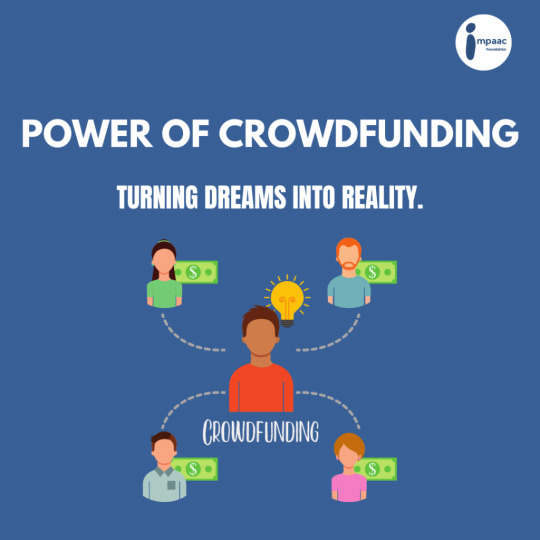
URL Link : https://www.blog.impaac.org/the-power-of-crowdfunding-turning-dreams-into-reality/
Building a Community of Supporters
The ability of crowdfunding to foster personal connections between creators and their audience is one of its most amazing features. Through crowdfunding sites, creators may exhibit their work, tell their experiences, and establish direct connections with possible supporters, in contrast to traditional fundraising approaches.
Creatives build community by communicating with backers and sharing their artistic journeys. An increased sense of connection is felt by supporters with the project and its creators. Between creators and backers, this sensation of belonging has the power to truly transform and forge a link.
Transparency and Trust
One of the core principles of crowdfunding is transparency. Artists need to be open and honest about the status, difficulties, and deadlines of their work. In the community, trust is increased by this transparency. In addition to funding a project, backers are also investing in the creators. They wish to follow the project's development and participate in its creative process.
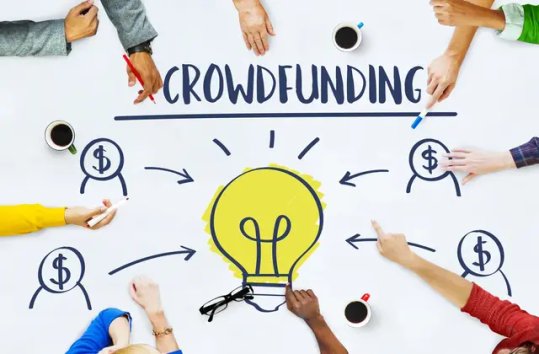
URL Link : https://www.btcpa.com/operational-transparency-key-effective-crowdfunding/
Rewards and Incentives
Creators frequently give backers incentives and rewards to boost support. These could be personalised shoutouts, limited-edition products, early access to the project, or even participation in the creative process. These benefits provide backers a sense of exclusivity and encourage contributions by making them feel like a valued member of the community.
Examples of Successful Crowdfunding Communities
Crowdfunding has been an effective tool for creating communities in a number of artistic endeavours. Here are a handful of noteworthy instances:
Patreon: A Platform for Independent Creators: Patreon is a way for writers, singers, artists, and other creatives to get continuous support from their followers. It creates a membership club where users may access creators' worlds and obtain exclusive content.Kickstarter Campaigns: Numerous imaginative initiatives have been started on Kickstarter. Regular updates, sharing of their work in progress, and communication with backers via messages and comments are all common practises among creators. The exchange fosters a feeling of community.
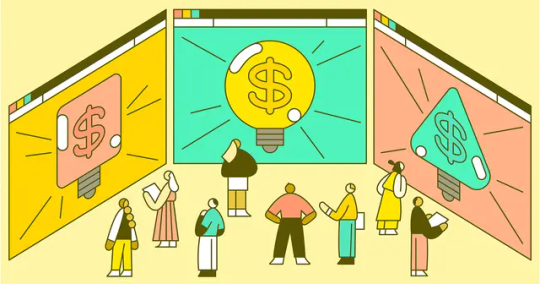
URL Link : https://www.shopify.com/my/blog/crowdfunding-sites
Writers' Communities: A lot of authors have published their novels using crowdsourcing. By asking for feedback on narrative development, names, and even covers, they include backers in the process. The reader-author relationship is strengthened by this active engagement.
Difficulties and Things to Consider
Although crowdsourcing has the potential to foster a creative community, there are several obstacles and factors to take into account.
Creators must be dedicated to supporting their community for the duration of the project and beyond.Managing Expectations: To preserve community trust, reasonable expectations must be set and project deadlines must be met.Fulfilment: Maintaining a good rapport with backers requires successfully meeting commitments and providing benefits.Competition: In order to draw backers, creators on crowdfunding sites must stand out due to the intense competition.
Crowdfunding Communities: A Look Ahead
The crowdfunding industry is still developing. The distinction between established business models and crowdfunding becomes more hazy as new platforms and models appear. Some producers have switched from one-time campaigns to recurring subscriptions, building long-lasting communities and steady revenue streams.
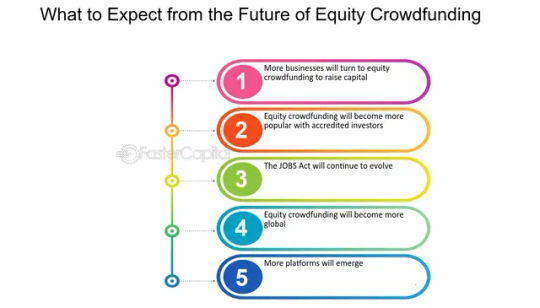
URL Link : https://fastercapital.com/content/The-Future-of-Equity-Crowdfunding--Why-it-s-Becoming-More-Popular-and-What-to-Expect.html
Growing communities around crowdfunding have the power to shape the course of artistic endeavours, spur creativity, and build a community of people who share a love for similar causes or forms of expression.
In summary, the goal of crowdsourcing is community building rather than just financial fundraising. It enables artists to realise their visions and establish connections with a devoted and interested audience. Crowdfunding may create thriving communities that will continue to influence the direction of creative endeavours in the future by offering rewards, transparency, trust, and continuous interaction.
Remember that crowdfunding is about more than just raising money for a project; it's about creating a community of like-minded people that value creativity as you set out on your own creative path or think about helping others. See where crowdsourcing can take you by participating in the discussion and taking part in the trip.
5 notes
·
View notes
Text
Is social media useful spreading information of covid - 19 in Malaysia or home country?
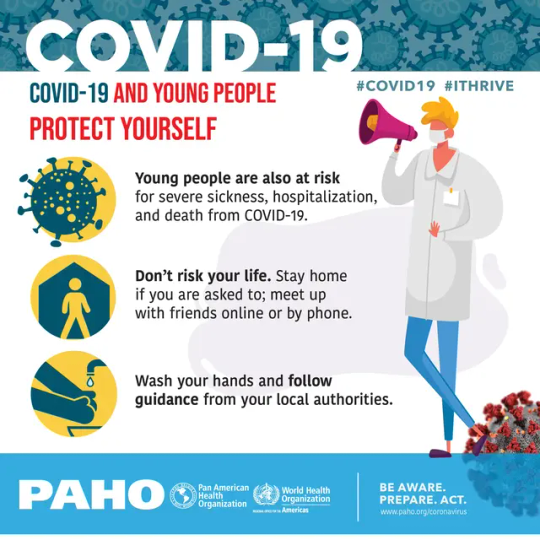
URL link : https://www.paho.org/en/topics/coronavirus-infections/coronavirus-disease-covid-19/social-media-cards-adolescents-and-covid
Introduction
The COVID-19 pandemic has changed the way we access information, and it's more relevant than ever to explore the role of social media in this context. Social media has emerged as a powerful tool for spreading information related to COVID-19, and we're taking a closer look at its impact in Malaysia.
Social Media as an Information Dissemination Tool

URL Link : https://www.wheninmanila.com/ol-access-social-media-as-a-tool-for-information-dissemination/
Social media platforms like Facebook, Twitter, Instagram, and WhatsApp have become primary sources of news and information for many people. During the COVID-19 pandemic, the use of these platforms has skyrocketed. People turn to social media to get updates on the latest statistics, guidelines, and news related to the virus.
The Benefits
Rapid Dissemination: Social media allows for the rapid sharing of information. Health authorities and government agencies can quickly update the public about new developments and safety measures.
Global Connectivity: It facilitates global connectivity. Information about COVID-19 in one country can easily reach a worldwide audience. This has allowed for the sharing of knowledge, best practices, and solidarity.
User-Generated Content: Social media empowers users to share their experiences, concerns, and ideas. This can foster a sense of community and shared responsibility in the fight against the virus.
The Challenges
Misinformation: The rapid spread of information on social media can lead to the dissemination of false or misleading information. This can be dangerous during a public health crisis.
Information Overload: The abundance of information can be overwhelming, making it difficult for individuals to discern credible sources from unverified ones.
Social Media's Role in Malaysia
Malaysia, like many other countries, has seen both positive and negative effects of social media in disseminating COVID-19 information.
Positive Aspects
Government Engagement: The Malaysian government has actively used social media to engage with the public. Regular updates from the Ministry of Health and Prime Minister's Office have helped keep the population informed.
Community Support: Malaysians have used social media to organize community support groups, share resources, and provide emotional support to those affected by the pandemic.
Public Awareness Campaigns: Social media has been a crucial tool in promoting public awareness campaigns. Information on mask-wearing, social distancing, and vaccination drives has been shared extensively.
Challenges in Malaysia
Misinformation: Malaysia has also faced issues with the spread of misinformation. Rumors and unverified claims have caused confusion and anxiety. Addressing this challenge is an ongoing effort, with government agencies and organizations working to provide accurate information.
Language Barriers: Malaysia is a multicultural and multilingual country, and not all COVID-19 information is accessible to everyone due to language barriers. Translation efforts and multilingual content creation are vital to reach all segments of the population.
Community Initiatives
One remarkable aspect of Malaysia's response to the COVID-19 pandemic has been the emergence of community-driven initiatives on social media.
Volunteer Networks: Numerous volunteer networks have formed through social media platforms. These volunteers assist with tasks such as food delivery, providing information to those in need, and supporting healthcare workers.
Resource Sharing: Malaysians have taken to social media to share information about where to find essential supplies, provide emotional support, and offer guidance on COVID-19 testing and vaccination centers.
Mental Health Support: Recognizing the emotional toll of the pandemic, individuals and organizations have used social media to provide mental health resources, helplines, and online support groups.
Conclusion
Social media has played a significant role in spreading information on COVID-19, both in Malaysia and around the world. While it offers rapid dissemination and global connectivity, it also poses challenges related to misinformation and information overload. To navigate this digital landscape effectively, it is crucial for individuals to critically assess the information they encounter, and for governments and organizations to utilize social media responsibly as a tool for public communication during such crises.

URL link : https://www.isis.org.my/2020/08/24/the-covid-19-infodemic-in-malaysia-scale-scope-and-policy-responses/
0 notes
Text
The Digital Revolution: Is Social Media a Threat to Traditional Asian Governments?
Introduction
In the age of information, social media has become an undeniable force shaping political landscapes worldwide. This phenomenon is particularly pronounced in Asian countries, where traditional forms of governance often clash with the rapid evolution of digital platforms. This blog post will explore the complex relationship between social media and traditional Asian governments, delving into a case study that highlights the impact and challenges faced by these governments in the digital age.
The Landscape of Social Media in Asia
Asia, home to diverse cultures and political systems, has witnessed a surge in social media usage over the past decade. Platforms like Facebook, Twitter, and local equivalents such as WeChat in China and Line in Japan have become ubiquitous. These platforms have not only revolutionized communication but have also given citizens a powerful tool to voice their opinions, organize movements, and challenge the status quo.

URL Link : https://www.lexology.com/library/detail.aspx?g=0db32aa7-6d81-4988-b9cd-b7f9b73491be
Caption: The rise of social media platforms in Asia.
Case Study: The Umbrella Movement in Hong Kong
To understand the implications of social media on traditional Asian governments, let's examine the Umbrella Movement in Hong Kong as a case study. In 2014, Hong Kong citizens took to the streets in a pro-democracy movement that drew widespread attention. Social media played a pivotal role in organizing and amplifying the voices of protesters.
Social Media as a Catalyst
Platforms like Facebook and Twitter became virtual town squares where protesters coordinated actions, shared information, and rallied support. Hashtags like #UmbrellaRevolution trended globally, putting pressure on the Hong Kong government and drawing international attention to the cause.

URL Link : https://time.com/5606212/hong-kong-history-mass-demonstrations-protest/
Caption: Protesters in Hong Kong during the Umbrella Movement.
Challenges for Traditional Governance
The Hong Kong government, accustomed to controlling information through traditional media channels, found it challenging to navigate the decentralized and instantaneous nature of social media. Attempts to restrict or censor online content were met with innovative circumvention methods, further highlighting the adaptability of social media in challenging traditional power structures.

URL Link : https://www.linkedin.com/pulse/challenges-digital-government-catherine-namara
Caption: Challenges faced by traditional governments in the digital age.
The Dual-Edged Sword: Empowerment and Control
While social media empowers citizens, it also presents challenges for traditional Asian governments seeking to maintain control. Here are key aspects of this dual-edged sword:
Empowerment of Citizens
Information Flow: Social media enables the rapid dissemination of information, allowing citizens to stay informed about government actions and policies.
Organizational Power: Movements can be organized swiftly, allowing citizens to express their grievances collectively.
Challenges for Traditional Governments
Loss of Narrative Control: The loss of control over the narrative may be a challenge for governments, as social media platforms offer a forum for a variety of views, including those that disagree with the authority of the government.
Security Concerns: Problems with Security Rapid mobilization, which is made possible by social media, can provide difficulties with security, particularly in situations where the government is caught off guard.
Striking a Balance: Navigating the Digital Age
As the political landscape in Asia continues to be reshaped by social media, traditional administrations are faced with the problem of responding to the changing terrain without surrendering in terms of stability. A delicate task that still has to be accomplished is finding a way to maintain order while simultaneously recognizing the benefits of having an informed and involved population.
Policy Responses
Literacy (Digital): Governments have the ability to invest in digital literacy programs in order to educate individuals on how to use social media in a responsible manner.
Strategies for Engagement: Cultivating a more open and honest relationship with citizens can be accomplished by establishing a presence on social media in order to communicate with them directly.
Conclusion
The impact of social media on traditional Asian governments is undeniable, as exemplified by the Umbrella Movement in Hong Kong. While social media empowers citizens, it also presents challenges for governments accustomed to controlling information through traditional means. Striking a balance between embracing the benefits of an informed citizenry and maintaining stability is crucial for the future of governance in the digital age.
As we navigate this complex terrain, it is essential to recognize that the relationship between social media and traditional governments is not a zero-sum game. The evolving landscape requires thoughtful strategies that harness the positive aspects of connectivity while addressing the challenges posed by the democratization of information.
0 notes
Text
Has any fandoms you’re involved in been part of any protest or acts of social activism (e.g. K-pop and Black Lives Matter)?
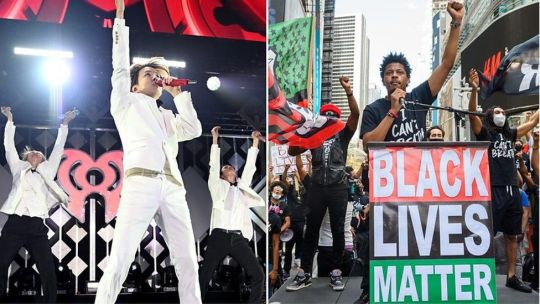
URL Link : https://www.bbc.com/news/world-asia-52996705
Introduction:
In the ever-evolving digital landscape, fandoms have transcended mere fan communities, emerging as dynamic forces of social change. This blog delves into the profound impact of fandoms on protests and activism, exploring the intersection where passion converges with purpose. Drawing inspiration from the K-pop fandom's impactful collaboration with the Black Lives Matter (BLM) movement, we aim to peel back the layers of influence that fandoms wield in shaping the discourse on social justice.
Body:
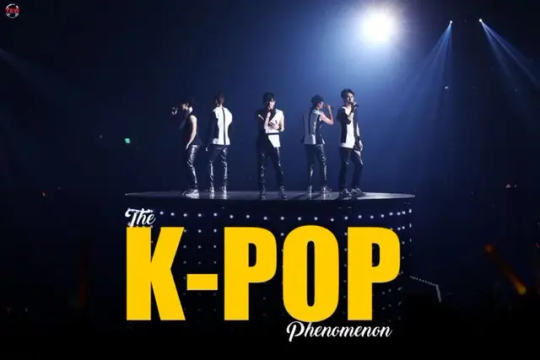
URL Link : https://theenterpriseworld.com/the-k-pop-phenomenon/
The K-pop Phenomenon: A Beacon of Activism The synergy between K-pop enthusiasts and the global BLM movement serves as a testament to the transformative potential within fandoms. Following the tragic events surrounding George Floyd, the K-pop community emerged as an unexpected yet powerful force for change.
Case Study:
K-pop Twitter Mobilization The strategic Twitter takeover by K-pop fans exemplifies the transformative power of fandoms in the digital realm. Through the strategic use of hashtags like #BlackLivesMatter, these fans not only drowned out divisive content but also amplified voices advocating for justice. This showcased the potential of fandoms to channel collective passion into impactful, real-time action.
Beyond the virtual realm, K-pop fans translated their digital activism into concrete actions by organizing fundraisers. This multifaceted approach not only highlighted the capacity of fandoms to transition from online activism to real-world impact but also solidified their role as a formidable force for positive change.
A Tapestry of Diverse Activism While the collaboration between the K-pop and BLM communities stands out prominently, other fandoms, such as the "Harry Potter" community, have left an indelible mark in the tapestry of social activism. The "Harry Potter" fandom, for instance, has played a pivotal role in championing LGBTQ+ rights, drawing inspiration from the inclusive themes within the magical universe.
These diverse instances underscore the versatility of fandoms as conduits for social change. Fans leverage shared enthusiasm to propel meaningful conversations and instigate tangible actions, turning their passion into a catalyst for positive societal change.
Challenges and Triumphs: Navigating the Landscape of Activism The journey of fandoms engaging in social activism hasn't been devoid of challenges. Faced with skepticism and criticism, these communities have navigated a delicate balance, showcasing resilience and adaptability. Overcoming these obstacles, fandoms continue to evolve, honing their ability to address societal issues with nuance and compassion.
The Ripple Effect: Beyond the Screen and Stage The impact of fandoms extends beyond the boundaries of entertainment. The K-pop and BLM collaboration positions fandoms as catalysts for change, influencing conversations and inspiring collective action. This ripple effect transcends the screen and stage, making fandoms integral components of the broader social fabric.
The Ongoing Conversation: A Look into the Future of Fandom Activism As we celebrate the one-year milestone of this blog, it is essential to consider the future trajectory of fandom activism. Fandoms, with their vast and engaged communities, are poised to continue shaping social discourse and advocating for change. The potential for collaborations between diverse fanbases and an array of social justice movements is boundless, inviting us to anticipate an era where fandoms play an even more significant role in shaping a socially conscious global culture.
Charting New Frontiers: Fandoms in Global Activism Movements Looking ahead, the global stage beckons fandoms to engage in an even broader spectrum of activism. From environmental causes to human rights advocacy, fandoms possess the collective strength to champion diverse issues. The fusion of shared passions and a united commitment to societal well-being positions fandoms as key players in global activism movements, with the potential to leave an indelible mark on the world stage.
Conclusion:
Fandoms as Architects of a Better Tomorrow In conclusion, the fusion of fandoms and social activism paints a compelling portrait of collective passion harnessed for societal good. The K-pop and BLM collaboration serves as a beacon, illuminating the potential within fandoms to shape narratives, challenge norms, and contribute to the pursuit of justice.

URL Link : https://blog.renaissance.app/fan-activism/
As we celebrate the one-year milestone of this blog, let it stand as a testament to the enduring impact of fandoms as architects of a better tomorrow. Fandoms exemplify the transformative power at the intersection of shared passion and a collective commitment to social justice, actively shaping the world we inhabit. This exploration invites us to recognize and appreciate the profound influence of fandoms, not just within their dedicated realms but as dynamic forces actively shaping the world we inhabit.
0 notes
Text
Is blogging still relevant in the age of TikToks and Instagram?
"Is blogging even a thing anymore? We've all heard people say 'blogging is dead' as many times as we've heard 'content is king.' Social media platforms like Twitter and Instagram have taken over as the go-to way to express ourselves online. So, you might be wondering if blogging still matters in today's digital world.
I've been blogging since 2012, and I've noticed that since around 2014, there are fewer active bloggers. But why is that? In fact, many people wonder, 'Do folks still even blog these days?'
Instagram
Instagram came on the scene in 2010 and quickly gained a million users in just two months. In less than a year, it had 10 million users. Today, it boasts over 1 billion active users and is one of the most popular social media platforms globally.
I kept hearing claims that blogging was on its way out, and terms like 'microblogging' started popping up. The debate of Blogging vs. Instagram is ongoing among digital influencers and content creators. Many folks prefer to share their lives through Instagram, posting photos for their followers instead of maintaining a traditional blog.
It seemed like long-winded content was being replaced by shorter, more image-heavy, easily digestible stuff.
When Instagram first started, it was all about sharing everyday moments—a pic of your meal or a quick snapshot with friends in a nightclub restroom. But over time, it evolved.
Instagram started being used alongside blogs. Most bloggers wanted to use it to promote their blogs, similar to how Twitter was used. However, because Instagram doesn't allow clickable links in captions, it didn't work out as well. You could say, 'the link is in the bio,' but it's just not the same as clicking a link right then and there.
Nowadays, Instagram has become a massive force, and we hear terms like Instagrammers, Influencers, and content creators more often than words like bloggers, vloggers, or YouTubers. Instagram feeds are no longer just snapshots of people's everyday lives; they're full of carefully curated images that often look like they're straight out of a magazine. I'm not saying that's a bad thing—I'm guilty of getting lost in a stunning Instagram feed myself."

URL link : https://skinnedcartree.com/2021/04/is-blogging-dead-the-rise-of-instagram-and-tiktok.html
TikTok
"Do you know that back in early 2019, TikTok became the most downloaded app on Apple's iOS store? It seemed to pop up out of nowhere and just took over.
It's even seeped into Instagram – I swear, every other food-related post these days is all about some 'TikTok recipe' like baked oats or feta pasta. And then there's Instagram Reels, which is like a total copycat of TikTok. Oh, and don't get me started on how Instagram seems to favor accounts that use Reels. But hey, that's a rant for another time.
Getting popular on Instagram can be quite the challenge, but TikTok works in a way that lets anyone hit it big, even if you don't have a massive following."
URL link : https://skinnedcartree.com/2021/04/is-blogging-dead-the-rise-of-instagram-and-tiktok.html
Why are Instagram and TikTok so popular, and is traditional blogging losing its appeal?
Microblogging Is More User-Friendly
Signing up for Instagram and TikTok is straightforward. You can create an account and start posting without the technical hassles of dealing with servers, domains, hosting, or website setup. No need to search for website themes or customize widgets.
Simplicity of Use
All you need is a mobile phone to get started. Apps like Lightroom and VSCO cam allow you to edit photos from your phone and create an attractive Instagram feed. TikTok offers easy in-app video editing, removing the need for advanced software like Final Cut Pro or Adobe's programs.
Access to a Potentially Wider Audience
As Valentina Chirico points out, every influencer aims to expand their audience. Instagram and TikTok offer the potential to reach millions of existing users. The audience is there; you just need to get your content in front of them. In contrast, blogging often requires substantial effort to attract traffic through SEO, keyword research, email marketing, or networking before you can monetize.
Shorter Attention Spans
Traditional blogging focuses on long-form content, which is essential for Google ranking. However, this contradicts how people use social media and the internet today. Users prefer quick browsing, consuming content, and moving on. Instagram excels at displaying beautiful images, while TikTok is the go-to platform for short, entertaining videos.
Brands Favor Instagrammers and TikTok Influencers
One challenge for bloggers is that more brands want to collaborate with Instagrammers and TikTok influencers. Some opportunities require influencers to post on their blogs, Instagram, and TikTok simultaneously. Even if bloggers don't use TikTok or prioritize it, brands increasingly value this multi-platform approach.
So, Is Traditional Blogging Declining?
Many experts predict that traditional blogging may decline due to the rise of social media platforms and evolving digital trends. However, I believe that traditional blogging is far from dead. People will continue to read blogs, and there will always be plenty to write about.
The blog readership is changing, as is their content consumption pattern. Blogs now need to focus more on solving readers' problems and providing valuable information. List posts and how-to guides still perform well. Moreover, most blog traffic comes from search engines, underscoring the importance of SEO.
Blogging is now part of the broader content marketing landscape, where content is distributed across various platforms. While marketers increasingly collaborate with Instagrammers, the ability to work with them across multiple platforms, including blogs, remains advantageous.
We should also remember that Instagram and TikTok could suspend or delete accounts, whereas with a self-hosted blog, you have complete control. It's unwise to rely solely on one platform. Once you have a successful blog, website, and an email list, you don't have to worry about losing everything overnight.
What are your thoughts? Do you think traditional blogging is on the decline?
1 note
·
View note